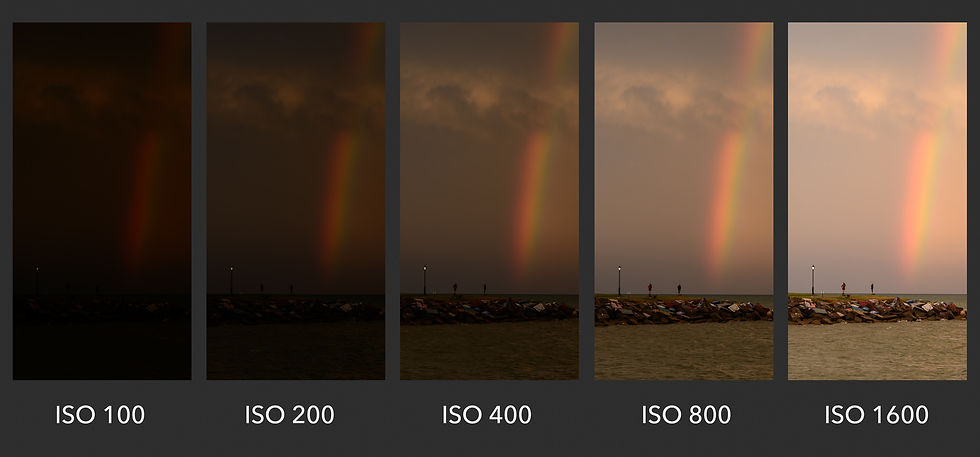Exposure triangle part 3 - Understanding ISO
- Jaysan X

- Jun 12, 2020
- 2 min read
Updated: Nov 1, 2020

In the previous article, We had seen how shutter speed works and how changing the shutter speed affects the motion blur of the image. In this one, We take a look at what ISO is and how it works and how changing the ISO will affect the image.
ISO simply stands for the International Organization of Standardization, which is the main governing body that standardizes sensitivity ratings for camera sensors.
The ISO value on your camera controls how sensitive your sensor is to the light it is exposed to. It’s basically like adding fake light to the image. When you increase the ISO, even little light is amplified and everything looks brighter.
Hence, we can also say that ISO is directly proportional to the exposure of the image. Increasing the ISO increases the exposure of the image.

The above image represents how the ISO affects the exposure of the image.
As we discussed before, each attribute has its own side effect. ISO has one too. And that is Noise.
What happens is that when you increase the ISO of the camera past a certain value, the camera gets so sensitive that it senses the minute electrical disturbances happening within the sensor and this results as noise in the image.

And this is why we need to keep the ISO as low as possible while taking a photo or a video.
This is also the area where expensive cameras outperform budget ones.
For example, A budget camera might show noise in its images when the ISO crosses 1600 or 3200. But an expensive camera can go upto 12800 or 25600 without showing much noise in the image. (the above numbers are just for reference and they are not accurate).
And this is going to be unique for every camera. And this attribute to not generate a lot of noise even when the ISO is increased is known as low light performance.
Well, that's about it for this one. Do check this space out next week to learn more about Photography.


















Comments